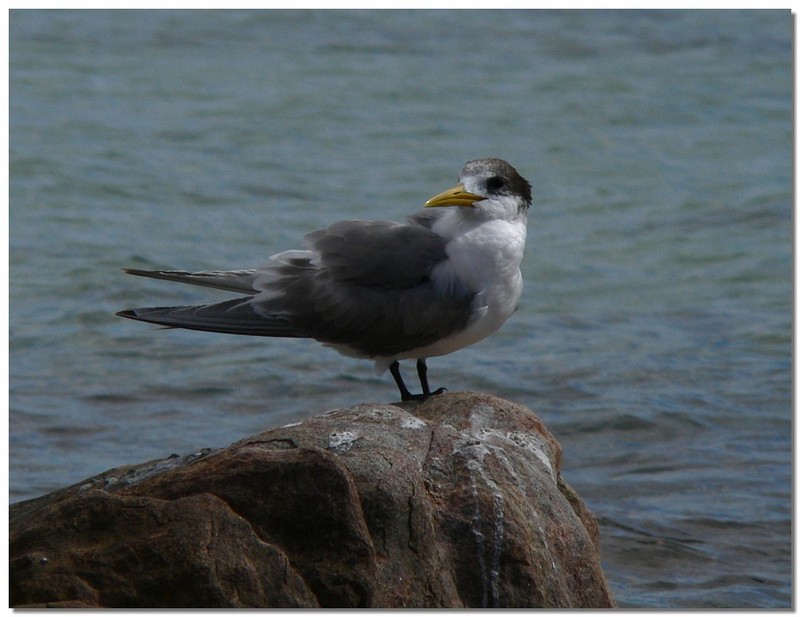juvenile crested tern Greater Crested Tern
Sterna bergii
Description
The Crested Tern is the second largest of the terns found in Australia and one of the most commonly seen species. It measures 49 cm in length and has a pale yellow bill, scruffy black crest, grey wings and back, and a white neck and underparts. Although it is often observed on its own, the Crested Tern also frequently forms mixed flocks with other species. Most common calls are a raspy 'kirrick' or 'krrow'.
The largest of the terns is the Caspian Tern, S. caspia. This measures 50 to 55 cm, and has a huge red bill. The Lesser Crested Tern, S. bengalensis, with which the Crested Tern may be confused, is slightly smaller and has a bright orange bill when breeding, and it is absent from Australia's south.
Distribution and Habitat
Crested Terns form small to large flocks, often with other species, along coastal areas throughout Australia and Tasmania. They are seldom seen on inland waterways, preferring islands, beaches, lakes and inlets. They are widespread from the south coast of Africa north to Asia and east to Polynesia.
Food and feeding
The Crested Tern feeds mainly on small surface fish that are between 5 to 8 cm long. Sighting prey from the air, the Crested Tern plunges downwards into the water and grabs the fish behind the head. Fisherfolk often use flocks of feeding terns to locate shoals of fish.
Breeding
Crested Terns form large, noisy colonies on offshore islands, often with other terns or gulls. Breeding takes place between October and December each year. The eggs, placed in a shallow scrape in the ground, are incubated by both sexes, and both care for the young. Downy young group together to form creches.
